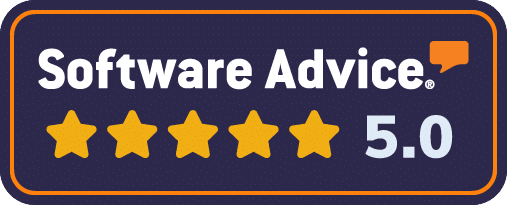How to Get Meaningful Feedback at Work
Feedback at work is a crucial element for professional growth. It provides insights into your performance and areas for improvement. However, not everyone knows how to effectively seek and receive feedback. This can lead to missed opportunities for development. This article will show you how you can get meaningful feedback at work.
We will delve into the importance of performance reviews and how they serve as a structured platform for feedback. We will also explore how to prepare for feedback sessions and how to implement the feedback received.
By the end of this guide, you will have a better understanding of how to foster a feedback-friendly culture in your workplace. This will not only enhance your personal growth but also contribute to the overall success of your organization.
Understanding the Importance of Feedback at Work
Feedback at work is vital for both personal and professional development. It provides a clear view of your strengths and areas that need improvement. Understanding this allows you to make informed decisions about your career path and development.
Moreover, regular feedback ensures that employees remain aligned with their organizational goals. This alignment is critical for maintaining productivity and achieving success. By valuing feedback, organizations can cultivate a culture of open communication and continuous improvement. Embracing feedback not only boosts individual performance but also strengthens team dynamics, ultimately leading to enhanced organizational performance.
Types of Feedback in the Workplace
Feedback in the workplace comes in various forms, each serving a distinct purpose. Understanding these different types helps you make the most out of the feedback process. Here are some common forms of feedback:
- Positive Feedback: Emphasizes and encourages good performance.
- Constructive Criticism: Provides insights into areas needing improvement.
- Performance Reviews: Structured assessments of an individual’s work performance.
Informal feedback can occur during casual conversations or through everyday observations. Such feedback is crucial for ongoing adjustment and support. On the other hand, formal feedback usually involves scheduled sessions, providing more comprehensive evaluations.
Receiving feedback from multiple sources, such as peers, managers, or subordinates, enriches the feedback process. This variety offers different perspectives on one’s performance and areas for growth. Each type, whether informal or formal, plays a unique role in fostering an environment of development and communication.
Positive Feedback and Its Impact
Positive feedback is a powerful tool in the workplace. It reinforces desired behaviors and boosts morale. When employees know their strengths, it enhances motivation and encourages repeat performance.
Constructive Criticism for Growth
Constructive criticism is essential for personal development. It focuses on specific behaviors and outcomes. Providing actionable suggestions helps employees improve and grow within their roles, fostering confidence and capability.
Performance Reviews as a Feedback Tool
Performance reviews offer structured feedback, typically on an annual or bi-annual basis. They evaluate an employee’s overall performance against set objectives. Properly conducted, they provide clarity on achievements and areas for future development.
How to Actively Seek Feedback
To improve in your role, actively seeking feedback is vital. Don’t wait for reviews; initiate the process yourself. Regularly ask colleagues and managers to share their insights on your performance.
Make feedback seeking a consistent part of your professional routine. It shows your commitment to personal growth and enhances your job satisfaction. By being proactive, you demonstrate responsibility and eagerness to learn.
When you solicit feedback, be specific about the areas you wish to address. This shows you value their input and are ready to apply it. Prepare yourself mentally to receive feedback openly and without defensiveness.
Preparing for Feedback Sessions
Preparation is key to effective feedback sessions. Set clear objectives and invite open dialogue. Arriving with a specific focus allows you to steer the conversation meaningfully and derive concrete takeaways.
Asking the Right Questions
Approach feedback with curiosity by asking open-ended questions. Questions like “What can I improve?” encourage detailed responses. This leads to richer, more valuable insights that aid in your professional development.
Utilizing 360-Degree Feedback
The 360-degree feedback method gathers insights from multiple perspectives. This comprehensive approach highlights strengths and uncovers blind spots. It’s invaluable for getting a holistic view of your performance and facilitating well-rounded growth. G360 Surveys is an easy to use platform that can help.
Receiving Feedback with Grace
Handling feedback gracefully is a critical skill. It involves embracing both praise and constructive criticism. To maximize benefit, listen attentively and express gratitude regardless of the nature of the feedback.
Avoid reacting defensively or dismissing feedback. Instead, view it as an opportunity for growth. Acknowledge the effort taken by others to provide you with valuable insights. Demonstrating professionalism during feedback sessions builds trust and strengthens workplace relationships.
Active Listening and Clarification
Engage in active listening by focusing fully on the speaker without interrupting. Absorb what’s being said and note key points. If something is unclear, ask clarifying questions to ensure understanding and gain deeper insights into the feedback provided.
Overcoming Defensiveness
It’s natural to feel defensive when receiving criticism. However, strive to manage these emotions constructively. Embrace a feedback mindset that prioritizes improvement over ego. Reflecting on feedback rather than rejecting it fosters personal development and demonstrates maturity.
Implementing Feedback for Personal and Professional Development
Using feedback effectively can propel both personal and career growth. After receiving feedback, reflect on its implications for your role and responsibilities. Identify areas where improvement is needed and pinpoint strengths that could be further developed.
Translate feedback into actionable items to guide your future actions. This could involve acquiring new skills, enhancing communication abilities, or adapting your working style. Implementing feedback should be a deliberate process that aligns with your career aspirations and performance objectives. By actively incorporating feedback, you demonstrate commitment to continuous self-improvement and professional development.
Setting SMART Goals
SMART goals—Specific, Measurable, Achievable, Relevant, and Time-bound—help translate feedback into tangible results. Craft goals that are clear and aligned with feedback points. This structured approach ensures progress is trackable and focused, providing a concrete path to achieving desired improvements.
Creating an Action Plan
An action plan bridges the gap between feedback and achievement. Outline specific steps you will take to address each feedback point. Assign timelines and resources for each action, and set checkpoints to review progress. This proactive approach ensures that feedback leads to meaningful change and advancement.
Feedback Etiquette and Best Practices
The way feedback is delivered greatly affects its reception and effectiveness. Practicing good feedback etiquette involves being thoughtful, ensuring your message is constructive and supportive. Always tailor your approach based on the context and individual you are addressing.
Feedback sessions should focus on fostering growth, not criticizing. Encourage open dialogue to understand different perspectives and promote a two-way conversation. A positive and supportive tone, combined with clear and constructive insights, can significantly enhance feedback outcomes.
Timing and Respectfulness
Timely feedback helps reinforce positive behaviors or correct issues before they escalate. Be mindful of the recipient’s situation and choose an appropriate time for discussions. Respect and sensitivity enhance the feedback experience, helping to build trust and openness.
Balancing Feedback and Encouragement
Constructive feedback, balanced with positive reinforcement, builds a motivated team. Highlight achievements while pointing out areas for improvement. This approach not only aids in development but also boosts morale, showing appreciation for efforts and commitment.
Leveraging Feedback Tools and Software
In today’s digital age, feedback tools and software streamline the feedback process. These platforms facilitate organized feedback, improve communication, and track progress over time. By utilizing these tools, teams can efficiently manage performance reviews and gain valuable insights, enhancing the feedback culture in the workplace and promoting continuous improvement.
Conclusion: Fostering a Feedback Culture for Success
Cultivating a culture of feedback is vital for organizational success. By integrating regular, constructive feedback into daily routines, employees feel valued and motivated. This commitment to open communication nurtures growth, enhances performance, and reinforces a positive work environment, ultimately driving the organization toward its goals.


